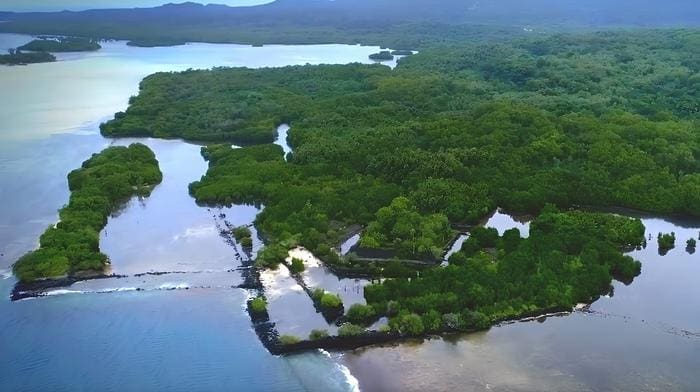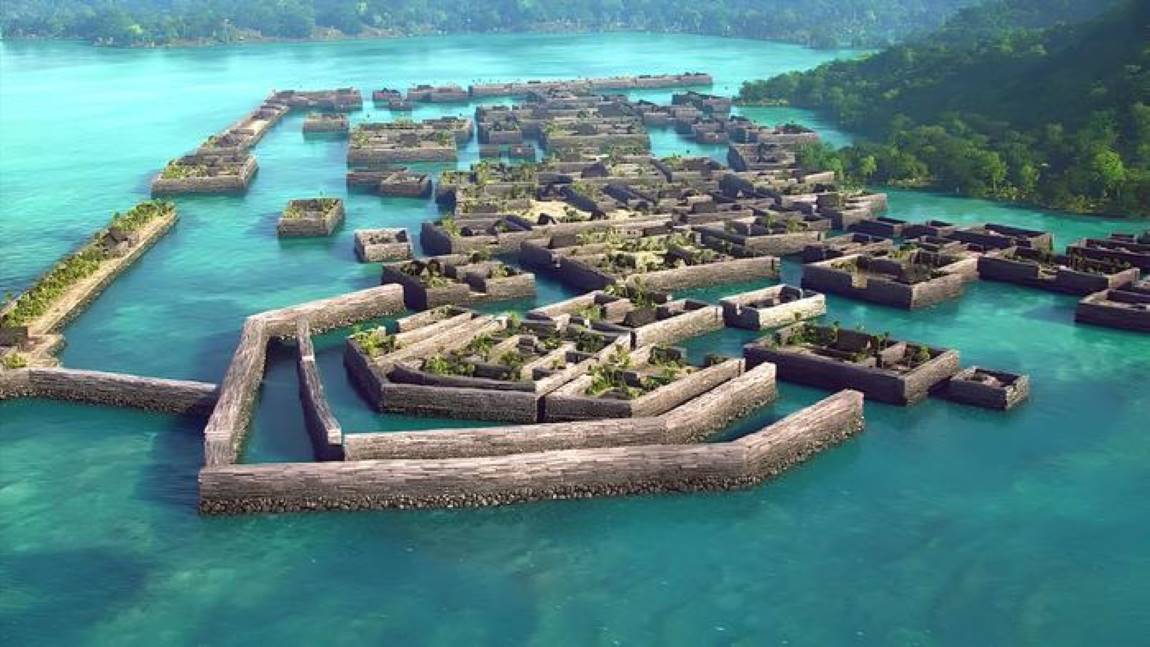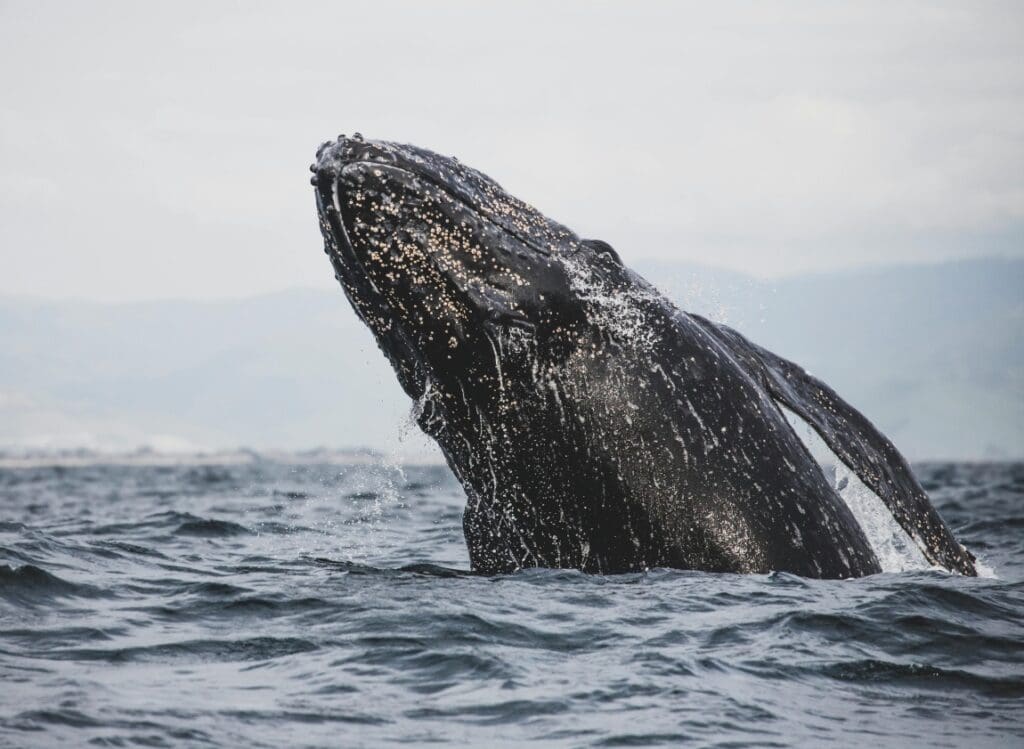The challenges posed by climate change and sea level rise are pressing issues for many modern societies, especially for island nations.
Historical precedents for these challenges are rare, but the rise and fall of the Saudeleur Dynasty, which ruled from its capital Nan Madol on the Pacific Island of Pohnpei, offers a unique glimpse into how environmental pressures may have shaped the fate of an ancient society.

New research suggests that fluctuations in the climate, particularly changes in the El Niño-Southern Oscillation (ENSO) and sea level rise, played a pivotal role in both the ascent and eventual decline of this Pacific chiefdom.
The study led by Chuan-Chou Shen and colleagues, published in PNAS Nexus, analyzed coral fragments and charcoal remnants to establish a more precise timeline for the construction and occupation of Nan Madol. Through uranium-thorium dating of 167 coral samples and radiocarbon dating of 18 charcoal samples, the researchers identified two major periods of construction.
The first phase occurred between the 10th and 12th centuries CE, coinciding with the rise of the Saudeleur Dynasty. The second phase, from the late 12th to the early 15th centuries, marked a period of increased construction activity, which may have been a response to rising sea levels and other environmental pressures. This timeline places the development of Nan Madol centuries earlier than previously believed.
Nan Madol, often described as the Venice of the Pacific, is a monumental stone complex made of coral and basalt. It served as both the administrative and cultural center of the Saudeleur Dynasty. The city was built on a series of artificial islets connected by canals, a testament to the advanced engineering skills of its builders. However, this coastal city was also vulnerable to the ocean, a vulnerability that became more pronounced as the sea level rose.
The research highlights how the ENSO phenomenon, particularly La Niña events, played a significant role in regional sea level changes. ENSO can cause sea levels in the Pacific to rise by as much as 30 cm during certain periods. Additionally, the island of Pohnpei was affected by long-term subsidence-related sea level rise, further exacerbating the situation.
The team estimates that between 800 CE and 1380 CE, the sea level around Pohnpei rose significantly. By the 12th century, some of Nan Madol’s canals were submerged by seawater, and water likely breached the site’s seawall, necessitating repairs and additional construction.

The second phase of building, which involved extensive efforts to protect the city from encroaching seawater, may have contributed to the downfall of the Saudeleur Dynasty. As the sea continued to rise and climate fluctuations persisted, the rulers found themselves locked in a cycle of continuous investment in seawater defenses. This constant rebuilding and repair likely drained resources and weakened the chiefdom’s stability. By the 15th century, the dynasty had fallen, leading to significant societal changes on Pohnpei.
The story of Nan Madol offers a cautionary tale for modern island nations, many of which are grappling with the same issues that the Saudeleurs faced centuries ago. The pressures of rising sea levels, driven by both climate change and local geological factors, can place immense strain on societies, particularly those with limited resources. Just as the Saudeleurs invested heavily in defending their coastal city, today’s island nations are investing in coastal resilience strategies to protect their communities from worsening climatic conditions.
While technological advances today may offer more sophisticated solutions than those available to the builders of Nan Madol, the underlying lesson remains the same: the forces of nature can reshape human societies in profound ways. The fate of the Saudeleur Dynasty is a reminder that environmental change, if left unaddressed or poorly managed, can lead to the downfall of even the most powerful societies.
Shen and his team’s research adds new dimensions to our understanding of the link between climate history and human societal changes. By dating the construction of Nan Madol with greater precision, the team has provided compelling evidence of how environmental factors like sea level rise and climate fluctuations shaped the destiny of the Saudeleur Dynasty.
Journal Reference:
Chuan-Chou Shen, Felicia Beardsley, Shou-Yeh Gong, Osamu Kataoka, Minoru Yoneda, Yusuke Yokoyama, Hsun-Ming Hu, Chun-Yuan Huang, Sze-Chieh Liu, Hong-Wei Chiang, Hsin-Lin Wei, Yun-Chuan Chung, Leilei Jiang, Albert Yu-Min Lin, James Fox, Mordain David, Jason Lebehn, Jason Barnabas, Gus Kohler, Zoe T Richards, Jean-Paul A Hobbs, Mark D McCoy, ‘Links between climatic histories and the rise and fall of a Pacific chiefdom’, PNAS Nexus 3, 10 (2024). DOI: 10.1093/pnasnexus/pgae399
Article Source:
Press Release/Material by PNAS Nexus
Featured image: A conceptual rendering of a reconstructed Nan Madol. Credit: Albert Yu-Min Lin




